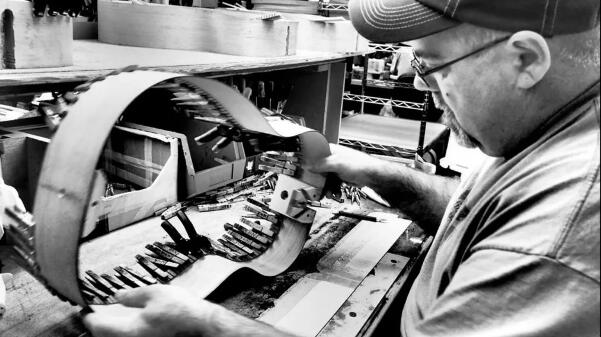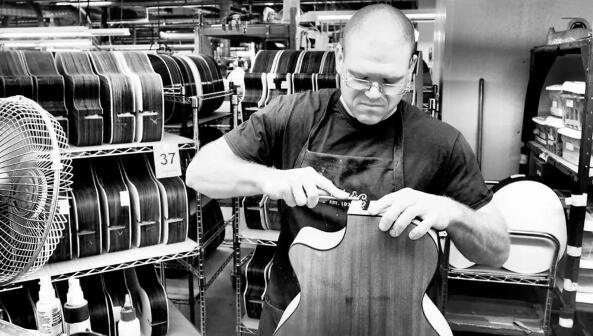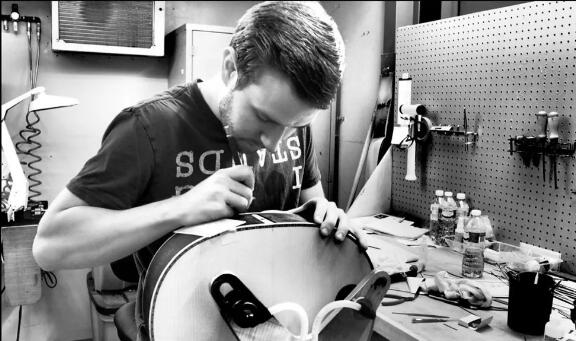When it comes to the season, you must have prepared a variety of seasonal fashion for yourself. So what should you prepare for your guitar?

Seasonal changes, followed by changes in temperature and humidity, the wood will also be deformed with the environment, causing problems such as distortion of the neck, hitting the fret, panel bulging or cracking. However, please don’t worry, as long as you deal with it correctly, these problems can be solved.

First of all, you can judge whether you need to change the guitar strings according to the intensity of the usual practice. The timely replacement of guitar strings not only has a great impact on the feel and tone, but also a good protection for the fret wire. Imagine playing with rusty guitar strings. The direct contact of the guitar strings is the silk, which will be corroded for a long time. If you are a rumored “sulphuric acid hand”, it is an essential step to wipe the guitar strings with a piano cloth or guitar string care oil after each practice.

After the strings are all removed, you can proceed to the second step — clean and humidify the fingerboard. Rosewood or ebony fingerboards, due to the presence of wood stomata, may expand or contract with changes in ambient humidity and temperature, causing cracking of the fingerboard or distortion of the neck. At this time, the necessary fingerboard humidification has become a key point. You can use professional fingerboard care oil to clean the wet fingerboard, not only to keep the wood a certain amount of moisture, but also to take away dust, dander and other debris, killing two birds with one stone.

The third step – adjust the neck. Before adjusting the neck, you can change a new set of strings as appropriate. Then adjust the strings to standard sounds. Keep the direction of the performance, lift the guitar, look up and look at the neck. Press and hold the 6-string 1st fret and 14th fret (if the neck joint is designed as 12th fret hold down 12th fret )to observe. If the neck changes concavely, turn the hex wrench inserted into the neck reinforcement clockwise (1 string direction). If it is raised, it will rotate counterclockwise (6-chord direction). It is important to note that the original wrench of the product must be used. Different sizes of wrenches can cause damage to the neck reinforcement. And each time the rotation, the amplitude should not exceed 45 ° angle, step by step adjustment strategy is the best choice.
Next, you can adjust the pitch according to your personal preference. It should be noted here that the chord distance refers to the distance between the bottom end of the string and the top end of the fret wire, not the distance from the fingerboard. According to personal preference, the piano pillow and bridge code can be properly polished after adjusting the neck. However, if you are a newcomer to the first contact, it is recommended that you go to a professional to repair. It is recommended that you do not excessively pursue low chord . (It is recommended that 1 string: 2.0MM-2.5MM, 6 string: 2.5MM-3MM) without any product. A lot of the sound and dynamics of the guitar comes from the vibration of the strings. If there is no certain pitch, the vibration is not sufficient, which will have a certain impact on the expression and skill expression of the music.

After these three steps of adjustment, the following points should also be noted in daily maintenance:
1. Do not get near heat sources such as air conditioners, heating, or cold air outlets.
2. Humidity is about 45-55%. If the humidity is too large, the panel will expand and the bridge will crack. Too dry will cause severe deformation of the neck of the face back. If it is severely dried, it will cause the panel to collapse and cause the sound beam to open or break.
3. After the guitar is placed in the case, do not lie flat to protect the neck.
4. If you are carrying or transporting a guitar across an area where the temperature and humidity are significantly different, do not rush to play and adjust the pitch, neck reinforcement, etc. First relax the guitar strings and let them rest for a few hours, then adjust according to the situation.
5. If you are not playing for a long time, please relax the strings properly. Such as the overall drop of a full tone. This will ensure that the pressure at the neck joint and the bridge is reduced to an acceptable range, and that the neck fingerboard is in a relatively average tensile force.
I hope that these maintenance and storage tips will help you. Workers must first sharpen their tools in order to do their best. Be kind to your guitar and it will bring you more fun.
